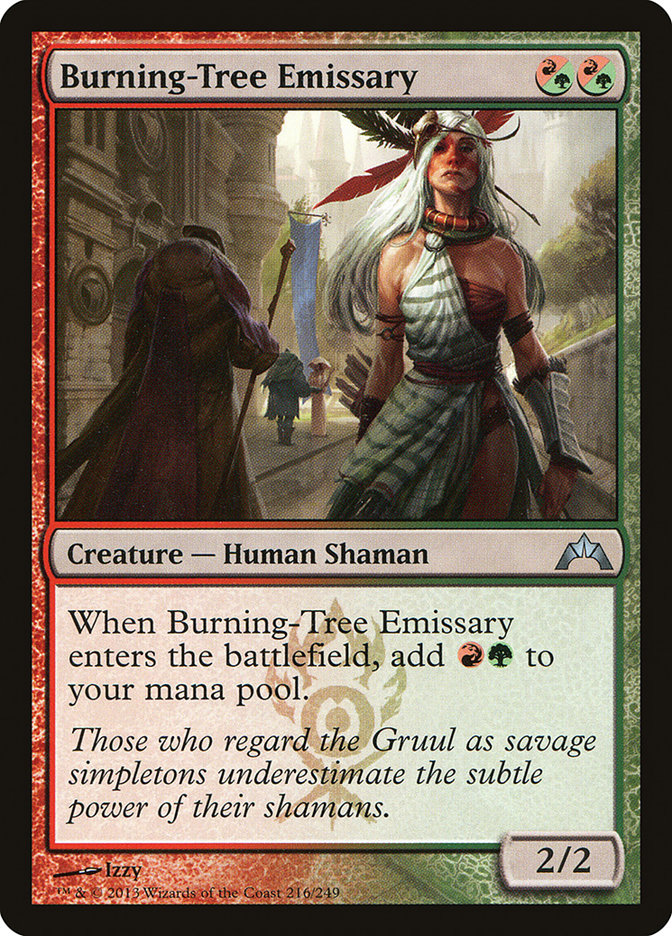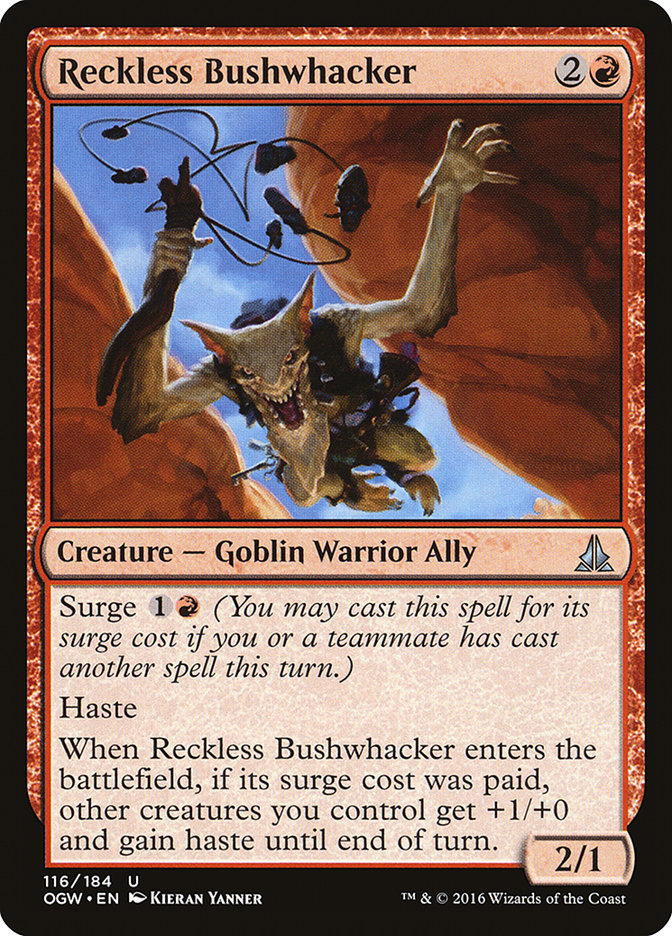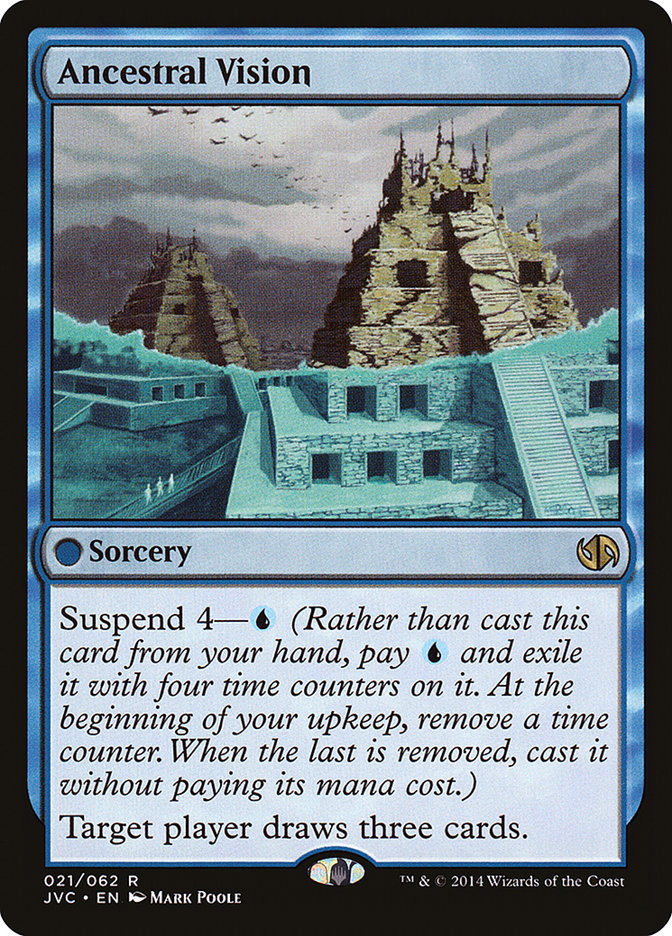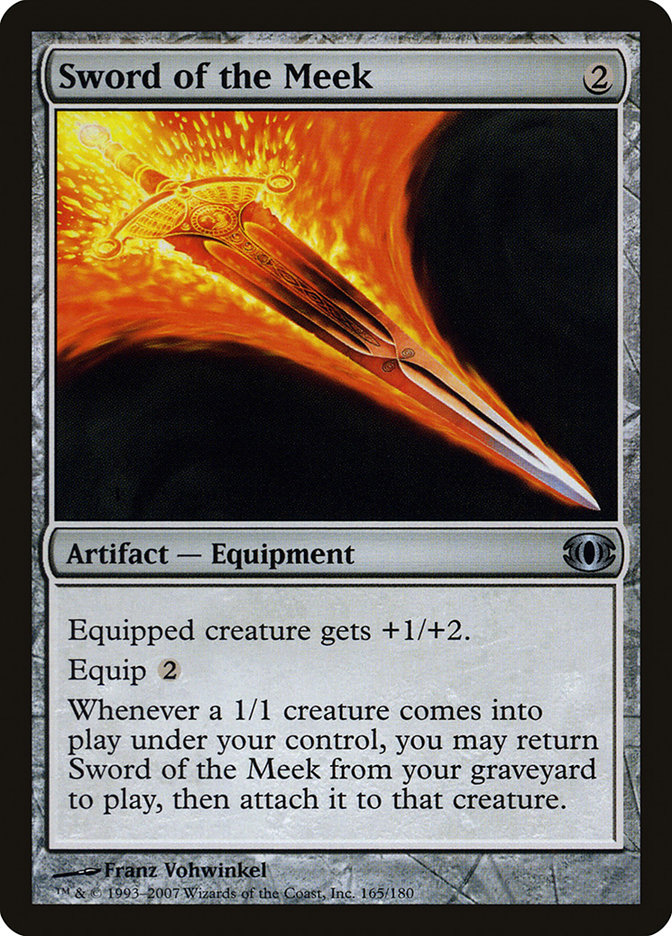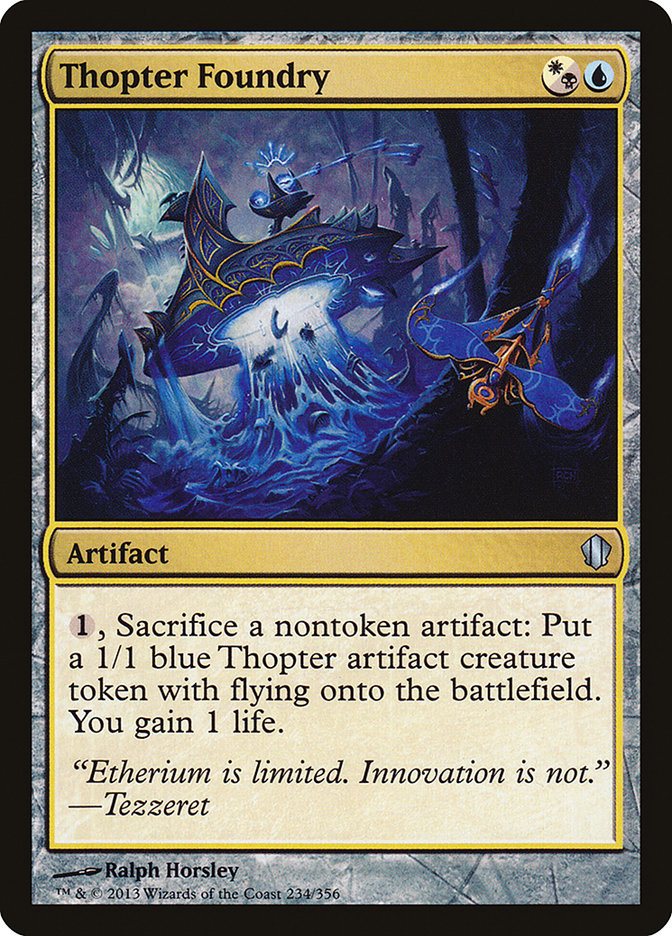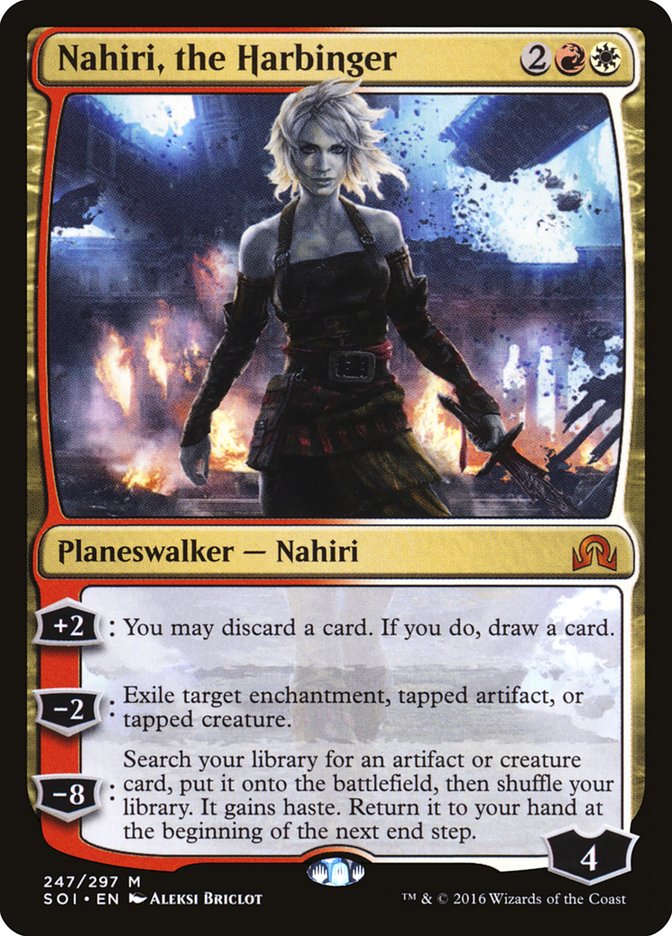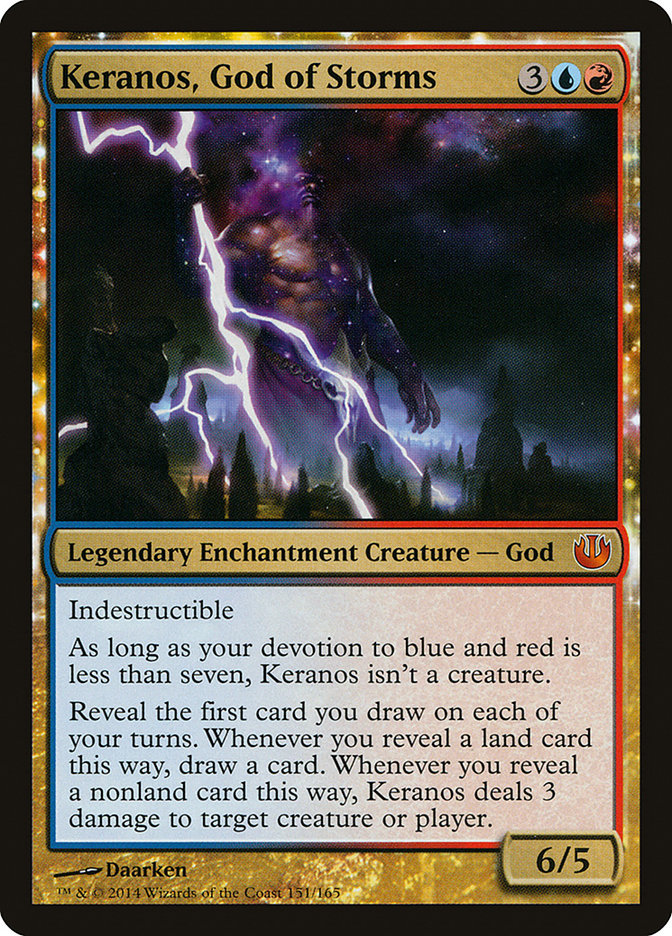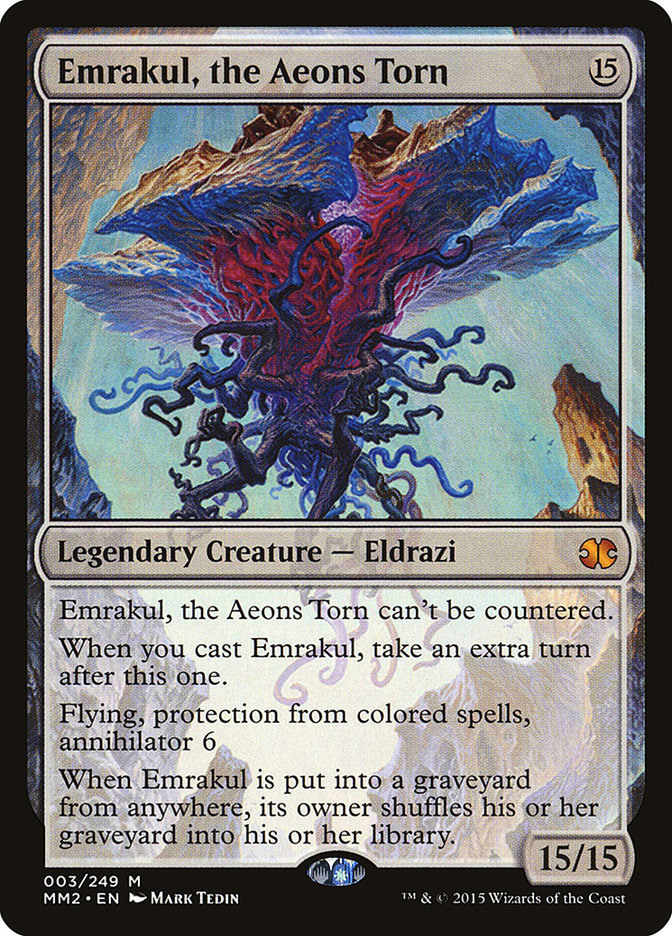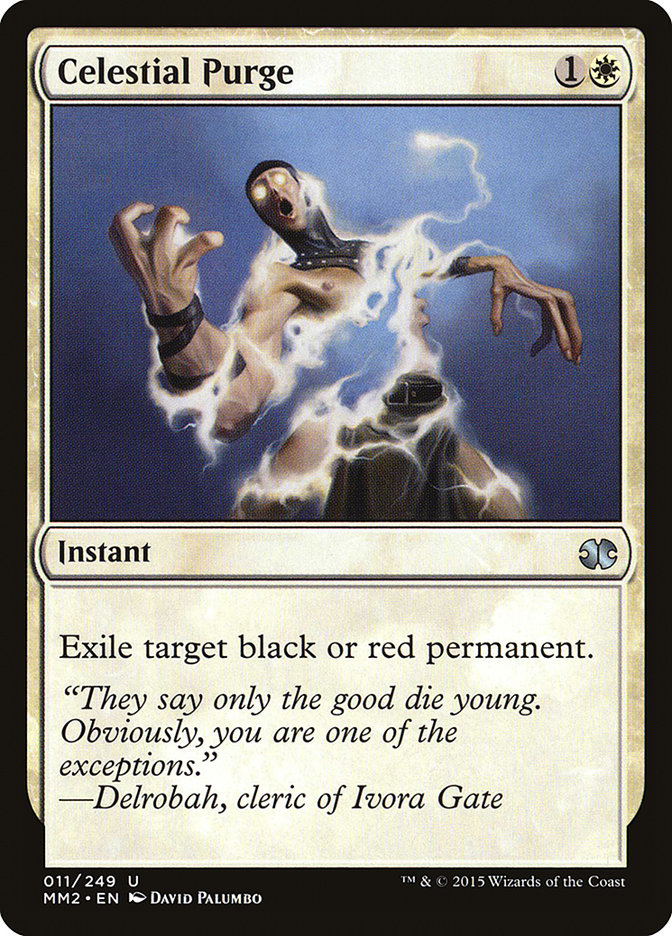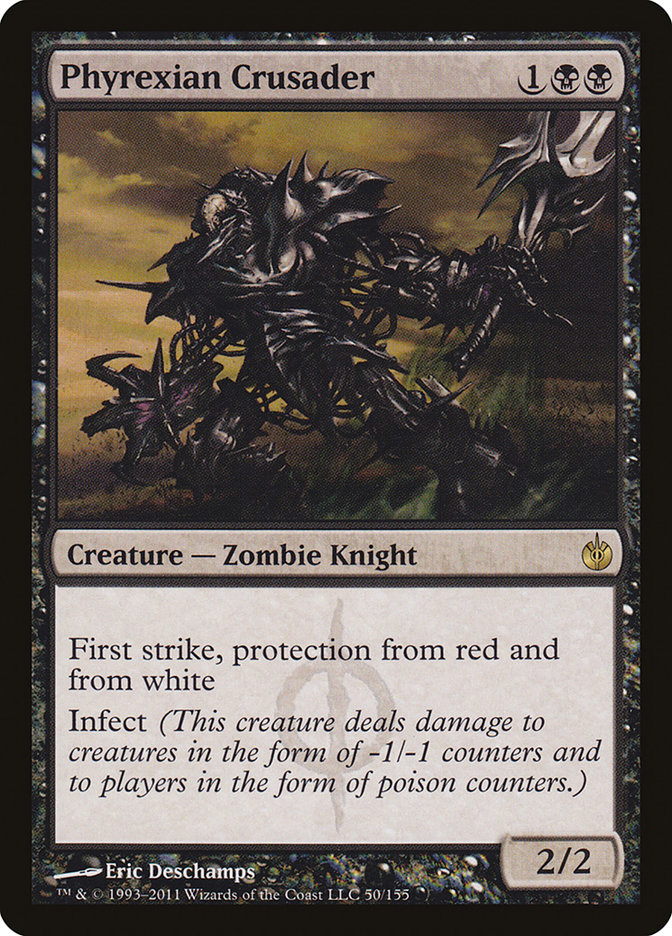Something strange is happening with Modern right now. Abzan Company, the default best deck in the format, was completely shut out of not just the Top 8, not just the money, but the entirety of Day 2 at #SCGINDY. This comes on the heels of an SCG Tour® event where three copies of the deck made the Top 8, including the eventual winner. In the span of two weeks we have seen two Opens with eleven different archetypes making Top 8. The only decks that repeated were G/R Tron, Jund, and G/U Infect.
The recent rise of Zoo, which I expanded on lastweek, was decisively quashed in Indianapolis, with only a single copy making the second day, and it was this list, which is closer to Naya Company than the Burning-Tree Emissary / Reckless Bushwhacker lists that we’ve seen over the last month.
Rather than narrowing in scope as players figure out how the unbanned cards fit into the metagame and what decks were most held down by Eldrazi Winter, Modern has expanded over the last three weeks, leaving us with a lot of questions going into Modern Weekend. Let’s look at what we’re dealing with.
Question 1: What Exactly Happened Last Weekend?
I, along with the rest of the Roanoke crew, decided to take a weekend off, which meant we spent the weekend closely following the tournaments instead of, you know, going outside and stuff. While we were all rooting for Gerry at the Magic Online Championship, the nature of that event meant that it would have less impact on the Modern metagame for this weekend, so outside of our personal investment, the SCG Tour® in Indianapolis was more interesting.
Confession: we all like to see new and interesting results come out of tournaments to satisfy our inner Timmy or Johnny, but our inner Spikes just want to see a stable metagame that is easy to exploit. So the results in Indianapolis were, let’s say, “unfortunate.” But they aren’t too difficult to figure out. In fact, I think last weekend displayed a common phenomenon in Magic: it was the result of the field reacting (and possibly overreacting) to recent data.
The weeks since Eye of Ugin saw us in a relatively new position in Modern. The metagame was obviously going to change radically from the previous few months, but it was not going to simply revert back to what existed before the Eldrazi. The removal of Splinter Twin and Summer Bloom took out two key players in the metagame, and another, G/R Tron, was significantly weakened by losing its late-game inevitability.
What we had was an unexplored metagame, akin to post-rotation Standard in a lot of ways. Rather than exploring a new set, we had plenty of players exploring the unbanned cards, Ancestral Vision and Sword of the Meek, as well as cards that were potentially suppressed by the Eldrazi.
The results of that exploration were similarly akin to post-rotation Standard with many players bringing untuned decks to tournaments and being felled by powerful, proactive, linear decks. This effect was magnified because the primary card that was suppressed by the Eldrazi was Reckless Bushwhacker, a card that improved a linear aggressive deck.
The early format was driven by the success of aggressive deck. Unsurprisingly, a slightly bigger midrange creature deck with an infinite life combo was successful in that metagame. Kitchen Finks is a nightmare for Wild Nacatl decks, and with the best fast combo deck (Amulet Bloom) and the best infinite damage combo (Splinter Twin) removed from the format as well as one of its worst matchups (Tron) being hampered both by the loss of Eye of Ugin and by the rise of these aggressive decks, it’s no surprise that Abzan Company was an early winner in the new Modern.
And, as we have seen so many times in Standard, the format adjusted. The reactive decks honed in on a specific target and outpaced the proactive decks in their progression after the opening week. Everyone came to Indianapolis targeting aggressive decks and many of them were successful as a result, perhaps none more so than this guy. I mean, wow. John Pellman must have had to hire someone to clean up the dead bodies he left in his wake, and I really hope whoever got the job was paid well. There’s no way this deck succeeds consistently in a more balanced metagame, but every deck has its time and Pellman found the right time.
It all looks so simple looking back, doesn’t it? It makes you feel kind of stupid for not seeing it beforehand and taking more advantage. Everything is clearer with hindsight. But that clarity does offer some hope for the future. We can now trace the trajectory of the metagame and make an informed prediction for where it goes next. So where are we right now?
These Aren’t the Cards You’re Looking For
It was a rough winter for Snapcaster Mage and his blue brethren. Splinter Twin was the most prominent blue deck in the format for years, and without the threat of a powerful combo, control decks in Modern had struggled to keep up with the wide array of threats the format presented. It seemed like blue mages were out of luck until Wizards of the Coast tossed them a life preserver.
Thopter Foundry and Ancestral Vision have formed the backbone of plenty of powerful and often oppressive blue decks in Magic formats past, from Next Level Blue and Faeries to the utterly dominant Thopter-Depths. With these additions Modern players were given renewed hope of a competitive control deck. So far these cards have merely been false idols whose past power did not translate years into the future, much like Bitterblossom.
As such, the resurgence of control was not driven by the return of the king(s), but by a new hope.
Nahiri, the Harbinger has received some high praise for a while, but until now it has failed to make its presence known at high-level tournaments. Pete Ingram put a stop to that with an impressive win last weekend in Indianapolis, and control players everywhere can now rejoice in the return of Jeskai Control to competitive relevance. Shaun McLaren can put away whatever demonic altar he has been praying and making sacrifices on. And if you need some help cleaning all the blood and gore, I hear John Pellman knows somebody.
But does Nahiri have staying power, or will it just cause another ripple in the metagame before fading back into obscurity? I believe the answer is the former, because Nahiri solves a key issue for control decks in Modern. It gives Jeskai a powerful way to close out games quickly.
For any reactive deck, dealing with the myriad proactive decks in Modern is too daunting a task. You cannot find only 75 cards that will consistently compete with these decks. More importantly, you will not be able to win every long game. The proactive decks are powerful and resilient enough that they will reasonably be able to cobble together wins with whatever cards come off the top of the deck. The only way to cover all your bases is by killing your opponent. And it’s best to do it quickly.
Splinter Twin could function as a control deck despite its mediocre individual tools because of the combo. Some players would be too afraid of dying, and the extra time they would give you by holding back would be enough to squeak out a win. Other players would overreact in sideboarding, leaving them with plenty of ways to stop the combo but few ways to beat a Keranos, God of Storms backed up by a few removal spells.
And on the opposite side of things, sometimes you would be hopelessly far behind, only to find the slightest of windows in which to resolve a Deceiver Exarch, fall to one or two life, and steal a game with Splinter Twin you could not have won any other way.
The combo was your way of punishing players who stumbled, rather than letting them draw their way back into the game and actually leverage the fact that they were mana screwed early because you flooded late and their hand is full of spells. Even if your opponent was aware of all these things, they would often have to guess whether or not it was appropriate to ignore or respect the combo, and guessing wrong was disastrous. Without the potential for any of these outcomes, Splinter Twin would’ve been a flimsy control deck that couldn’t really beat anything. Instead it was a Tier 1 deck for its entire lifespan in the format.
Nahiri, the Harbinger isn’t quite as powerful as Splinter Twin was, but it does give Jeskai a way of winning quickly when their early removal spells give them a small window. All Nahiri asks is that you have a one-turn reprieve with four mana to cast it. Once you do, it’s only two turns until Emrakul, the Aeons Torn comes down to, well, tear some aeons.
The obvious solution to a planeswalker is to attack it, but Nahiri has so much loyalty that you will have a tough time doing that efficiently. If you give up too much damage trying to kill it, you will lose to the value its +2 accrues, but if you don’t attack it at all… your poor Aeons. This is the Nahiri squeeze, and the beauty of it is it takes essentially no effort on your part to put your opponent in it. Most of the time, the best way of getting out of it is to continue attacking your opponent until it gets to eight loyalty, at which point you have an interesting attack to make.
You need to either reduce your opponent to zero or reduce Nahiri to seven. Failing the former, you would ideally want to accomplish the latter with the fewest resources. But if you send only one creature to Nahiri, the Harbinger, you lose to a single removal spell. So you have to try to gauge the strength of your opponent’s hand and make the decision from there. And much like with Twin, if you make the wrong decision, you lose.
Nahiri lets Jeskai approximate what Splinter Twin used to do, and it does so while only taking up five slots in the deck, so you can afford to play more interactive cards. And unlike Deceiver Exarch and Splinter Twin, which were weak cards by themselves, Nahiri can do some work for your normal gameplan.
The -2 can take out not only troublesome creatures, but also problematic non-creature permanents that have heretofore plagued reactive control decks. Think cards like Blood Moon and Keranos, God of Storms. Now getting a single Plains onto the battlefield makes Blood Moon a non-starter and Keranos looks embarrassing. The double-duty Nahiri pulls by opening up a new angle to these decks while also being a solid control card is scary…and something we are all now forced to prepare for.
The Next Step
So how do we react to the rise of Nahiri, the Harbinger? One card that I expect to see in sideboards is Celestial Purge. It answers Nahiri as well as things like Blood Moon and Liliana of the Veil, so the latter get weaker, as well as expensive creatures that get swept up in the Purge.
Lightning Bolt and Path to Exile get a lot more popular, since they form the support structure for Nahiri, and that points to one creature: Phyrexian Crusader.
Alex Zurawski took G/B Infect to a Top 4 finish in Indy, and I expect Pete Ingram was thrilled to not see that deck across from him in the finals. Crusader is a nightmare for Jeskai as it is currently constructed, and the deck still retains the fast Infect kills U/G has, which means slowing your deck down to ensure you can sweep away a Crusader with something like Supreme Verdict is not going to be too effective.
I would also look to punish your opponents for tapping out on turn 4 with Nahiri, either with a resilient combo deck like Ad Nauseam or by having instant-speed threats, likely with Collected Company in a bigger aggro shell such as Naya. The Through the Breach / Valakut deck also has some legs here, since two Primeval Titan triggers are likely enough to win the game on the spot, and the deck ignores all the interaction in Jeskai outside of Path to Exile and counterspells.
The key to understand is that you can no longer sit back with hard-to-answer threats and play a slow, plodding game unless you can immediately answer Nahiri, because all the value you have gained means nothing when your Aeons are lying in a bloody heap on the floor.
The decks that were hated out last weekend will certainly reappear in some numbers as the Jeskai decks are forced to adapt to new threats, so we are not at equilibrium yet, but the landscape of Modern has a new mountain to climb. See you at the summit.


